When coming up with alternative takes on Batman – usually as part of DC’s Elseworlds line – many authors have looked for inspiration in classic works of gothic literature and film. The reason this tends to work so well, I suppose, is not just because the Dark Knight is such an adaptable character, but because even the regular Batman comics owe a clear debt to this type of fiction. As the examples below demonstrate, it is therefore relatively easy to transpose gothic tales into a formula built around a mysterious figure donning a cape and cowl, an old mansion, nocturnal escapades, citywide gargoyle-adorned architecture, and a rogues gallery made of monsters and disfigured lunatics.
The most well-known case is probably Red Rain, in which the Dark Knight memorably battles Dracula. This comic was written by Doug Moench and drawn by Kelley Jones (with inks by Malcolm Jones III, colors by Les Dorscheid, and letters by Todd Klein), so of course it’s the most over-the-top gothic thing you can imagine…
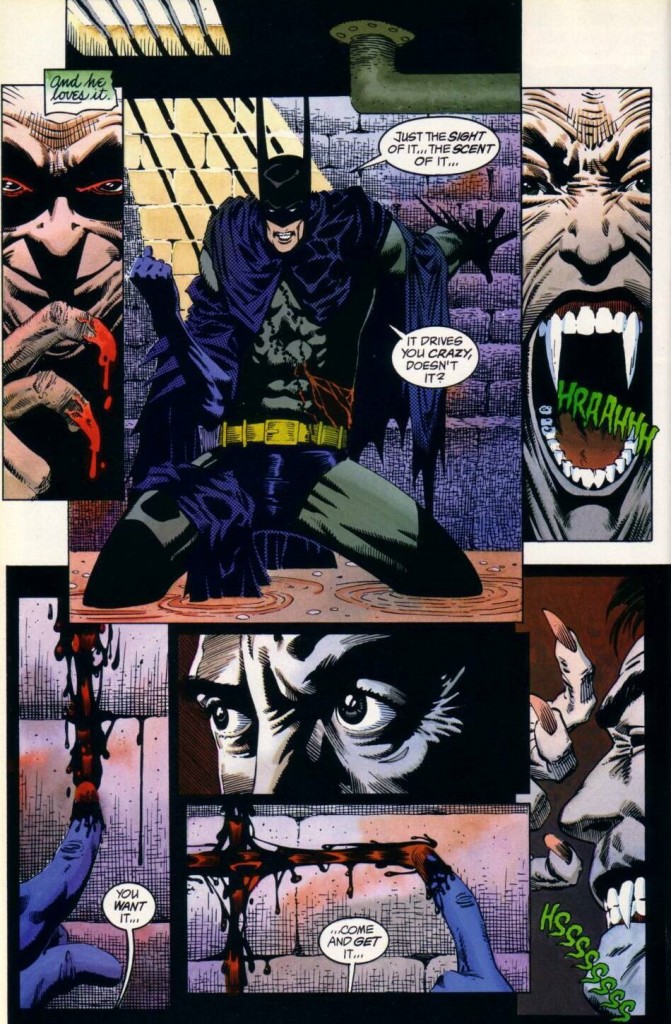
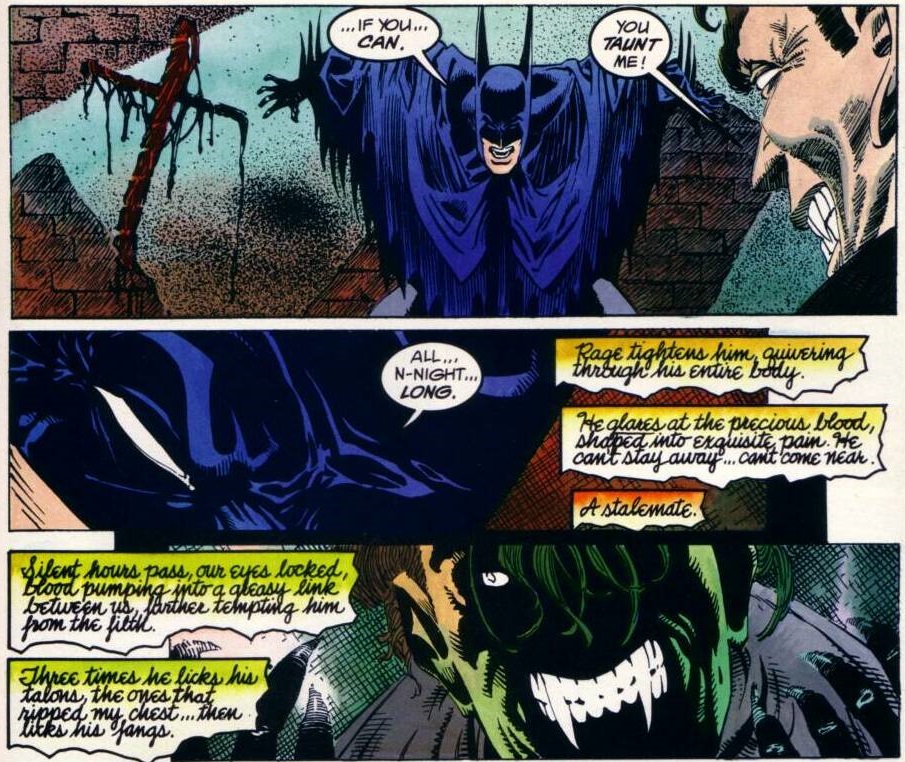 Red Rain
Red Rain
As extreme as Red Rain is, however, it doesn’t feel entirely out of place in terms of either mood or aesthetics as far as Batman comics go. Indeed, the team of Doug Moench and Kelley Jones actually ended up doing tons of similar work with the Dark Knight, including not only two sequels to Red Rain and a couple of further Elseworlds tales, but also over thirty issues of the canonical Batman series.
Similarly, apart from the fact that it’s set in 1928, The Doom That Came to Gotham (written by Mike Mignola, who co-plotted it with Richard Pace) does not come across as a particularly strange yarn, since it pits the Caped Crusader against baroque mystical creatures that are taking over his city, which is something we’ve seen before. That said, the comic does share much of the sensibility and style of Mignola’s Hellboy and, above all, it is a clear homage to the writings of H.P. Lovecraft. The real star, though, is the art team of Troy Nixey, Dennis Janke, and Dave Stewart, who have a field day putting a Lovecraftian twist on the designs of familiar characters…
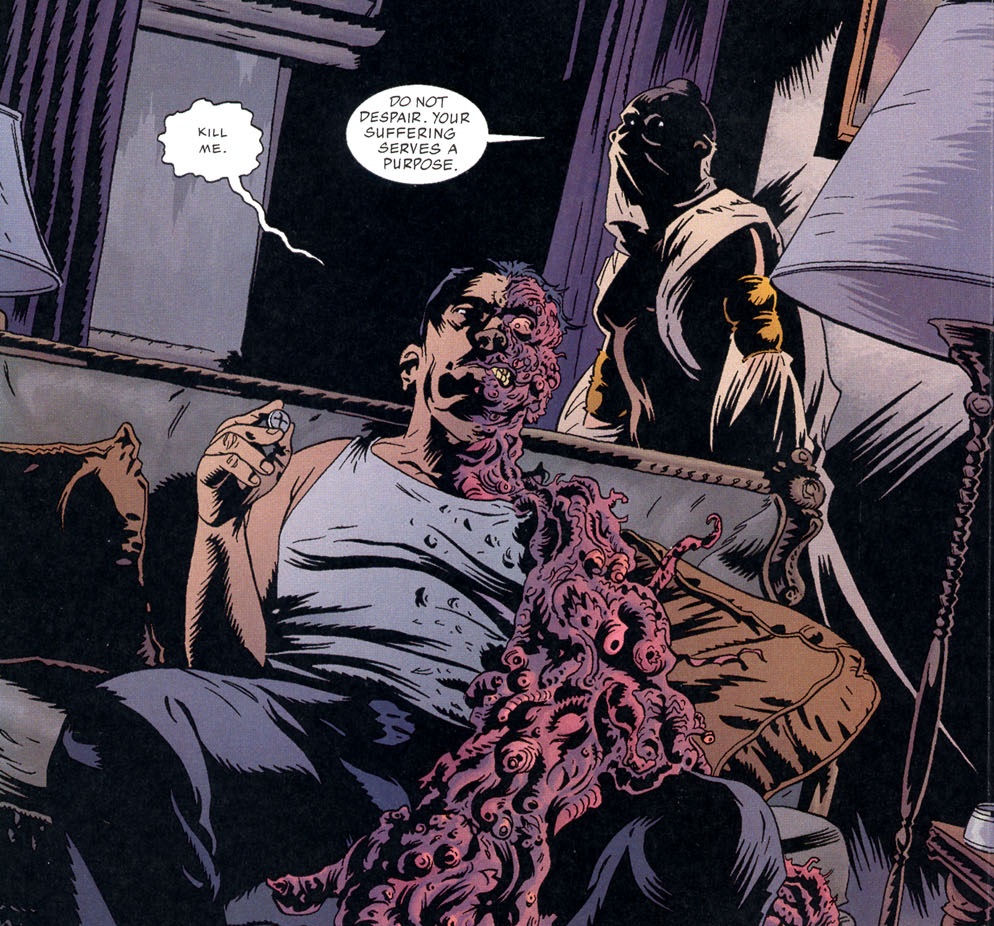 The Doom That Came to Gotham
The Doom That Came to Gotham
Another horror author who got the Elseworlds treatment was Edgar Allan Poe. This homage was even more explicit: an apprentice reporter for the Baltimore Sun, Edgar Allan Poe himself is the protagonist of the enjoyable mini-series Nevermore, where he teams up with Batman to solve a macabre mystery that inspires his future writings. Len Wein captures Poe’s ornate prose while appropriately filling the story with black cats, ravens, and orangutans (and you get no points for guessing which deathtraps the heroes find themselves in). The art by Guy Davis, a master of the period piece, is further elevated by Jeromy Cox’s beautiful coloring and John E. Workman’s elegant lettering.
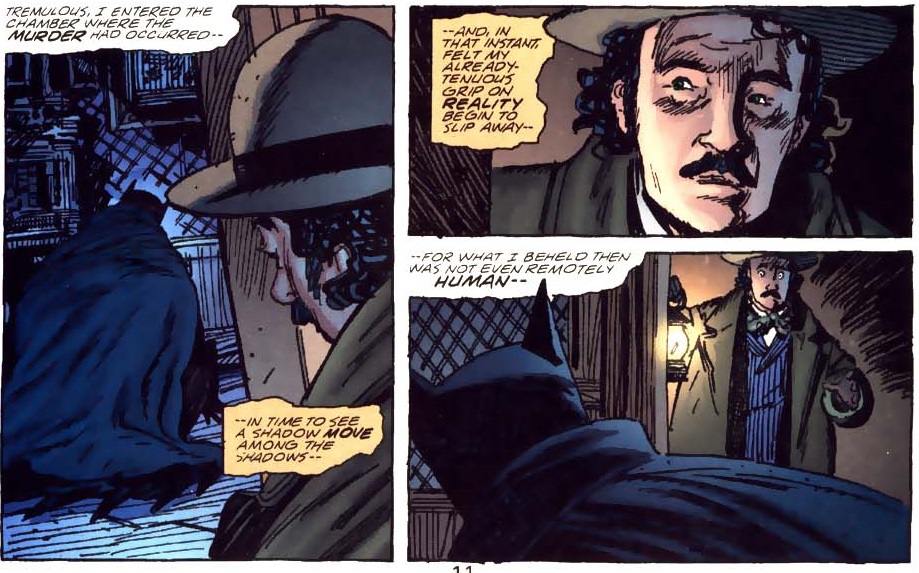 Nevermore
Nevermore
To be sure, Batman’s peculiar rogues gallery encourages these intertextual games. For example, consider Harvey Dent (aka Two-Face), a tragic madman with a horrific appearance and an obsession with duality – these are all typical gothic motifs! Notably, Mike Grell cast Harvey Dent as the Phantom of the Opera in Masque while Dan Abnett and Andy Lanning made Dent a key villain in Two Faces (a vicious take on The Strange Case of Dr Jekyll and Mr Hyde). In turn, Batman Chronicles #11 reimagines Selina Kyle in a noirish short story called ‘Curse of the Cat-Woman’ (courtesy of John Francis Moore and Kieron Dwyer). It owes its central idea to the 1942 horror film Cat People (although, curiously, not as much to the more similarly titled sequel, The Curse of the Cat People). And while the comic doesn’t do justice to the movie’s subtext about sexual repression, at least it ends on a neat twist!
Likewise drawing on classic cinema, writer Jean-Marc Lofficier and artist Ted McKeever did a trilogy of comics based on German expressionism. Their first collaboration, Superman’s Metropolis, is quite faithful to the source material – it reworks the Man of Steel and his supporting cast as part of Fritz Lang’s 1927 surrealist epic about an art deco dystopia in which the working class has been reduced to cogs operating at the mercy of a distant elite. In this version, Superman (Clarc Kent-Son) saves the revolting workers from a flood of molten metal unleashed by the city’s ruler and becomes the messianic mediator between the two classes – the ‘heart’ between the capitalist ‘brain’ and the proletarian ‘hands.’
In the sequel – which Lofficier co-wrote with his wife, Randy – the eminent Doktor Bruss Wayne-Son becomes a scary vigilante who resembles the titular character from F.W. Murnau’s Nosferatu (itself a distorted retelling of Bram Stoker’s Dracula).
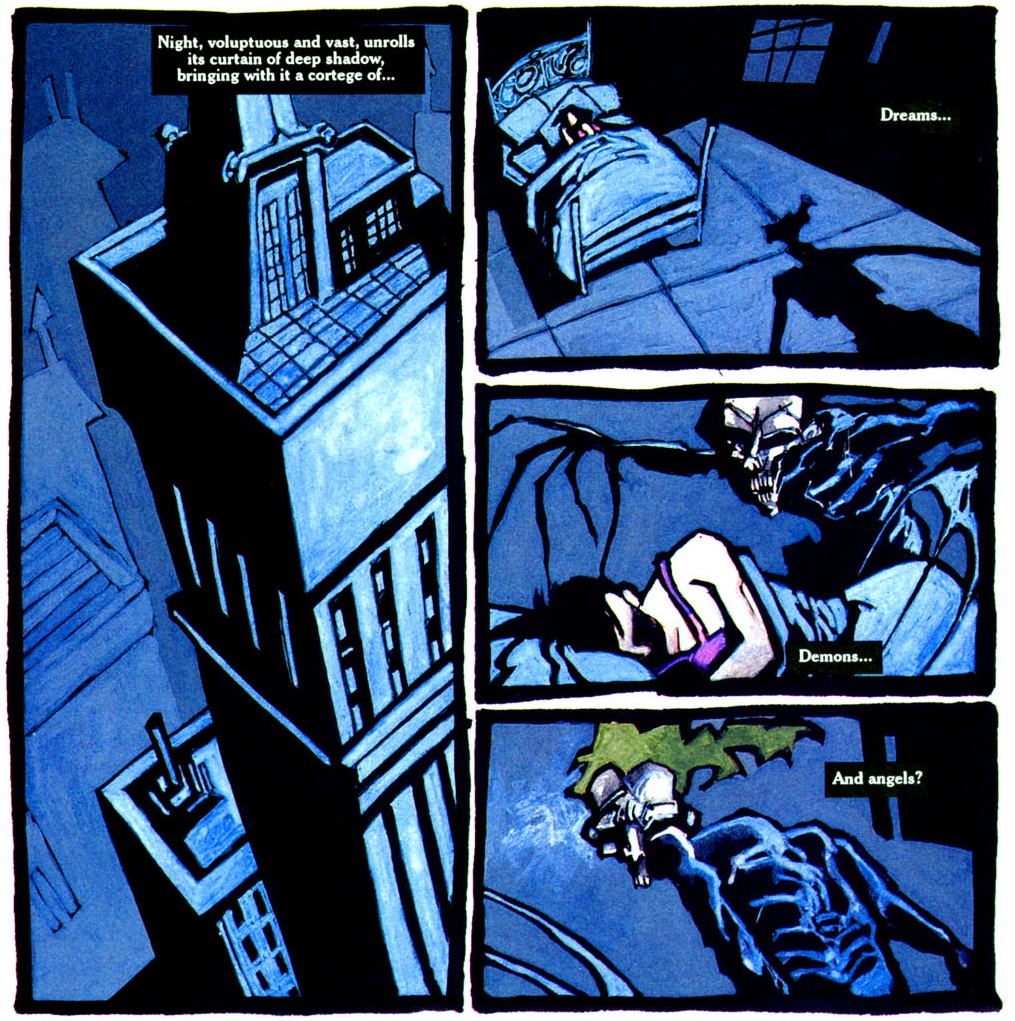
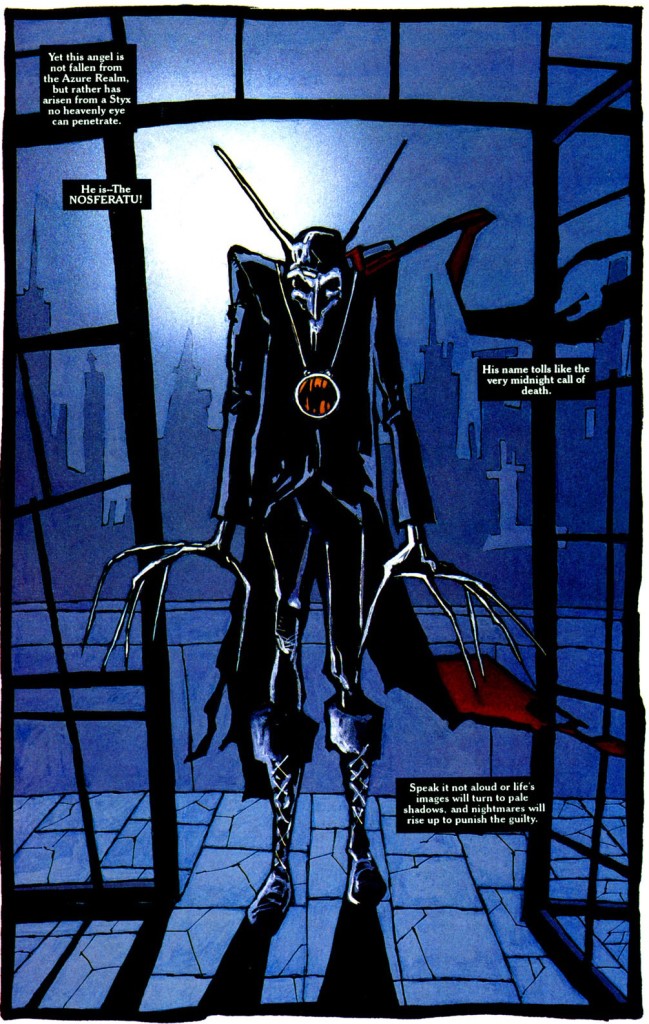 Batman: Nosferatu
Batman: Nosferatu
Compared to Superman’s Metropolis, this is a much more muddled work. For one thing, despite a handful of visual callbacks – Batman’s Orlok-ish features, silhouettes on rooftops, stretched shadows on the walls – the plot of Batman: Nosferatu has barely any connection to the eponymous film, owing more to Robert Wiene’s The Cabinet of Dr. Caligari and Paul Leni’s The Man Who Laughs. (The third installment in the series, Wonder Woman: The Blue Amazon, is an even looser mishmash of nods to Josef von Sternberg’s The Blue Angel and Fritz Lang’s Dr. Mabuse, the Gambler.)
Batman: Nosferatu also sounds slightly confused about its politics. Superman turns out to be less a ‘mediator’ than a new ruler, somewhat contradicting the point of the previous volume. Indeed, the initial premise here is that the city needs a vigilante to avenge the murders of aristocrats which have escaped the notice of Superman, who is only obsessed with the conditions of the lower class. Bruss justifies his actions by claiming that there will always be flaws in Clarc’s sunny utopia which can only be addressed through a dark brand of justice. The two heroes then proceed to violently fight until some weird underground machines bring up the old metaphor about shadows and light defining each other, which I’m not sure makes that much sense in the context of their bloody argument but it’s enough for them to reach an ambiguous settlement… Still, as a deus ex machina for a Batman vs Superman slugfest, it’s way more convincing than the one in Zack Snyder’s movie!
